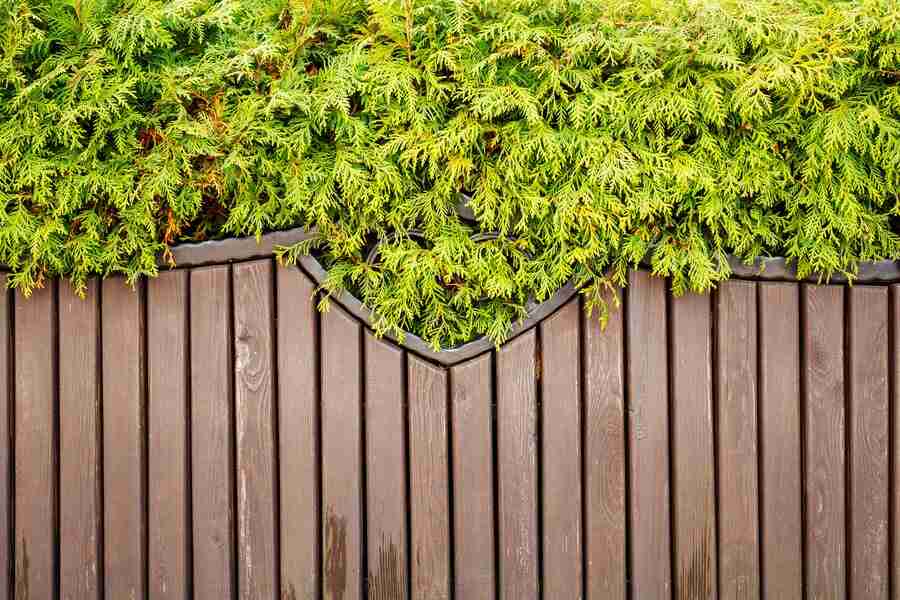
Welcome to our comprehensive guide on landscape fencing ideas, where we delve into the world of outdoor design and functionality. Your outdoor space is an extension of your home—a sanctuary where you can relax, entertain, and connect with nature. However, without the right boundaries and privacy measures, it can feel exposed and lacking in comfort.
Landscape fencing serves as the backbone of outdoor design, providing structure, defining boundaries, and adding aesthetic appeal to your yard or garden. From traditional wooden fences to modern metal installations, there is a plethora of options to suit every style and preference. Whether you have a small urban garden, a sprawling rural property, or a coastal retreat, there are landscape fencing ideas tailored to enhance your outdoor space.
In this blog, we’ll explore the diverse range of fencing options available, offering inspiration and practical advice for homeowners and outdoor enthusiasts alike. We’ll discuss the importance of understanding the purpose behind landscape fencing, delve into different types of fencing materials and styles, and provide creative ideas for maximizing the potential of your outdoor oasis.
Join us on a journey through the world of landscape fencing, where functionality meets beauty, and outdoor spaces are transformed into inviting retreats. Whether you’re looking to create a private sanctuary, establish boundaries, or simply elevate the aesthetic appeal of your yard, this guide has something for everyone. Let’s embark on this adventure together and unlock the full potential of your outdoor space.
Understanding The Purpose Of Landscape Fencing
Understanding the purpose of landscape fencing is essential for creating functional, safe, and aesthetically pleasing outdoor spaces. At its core, landscape fencing serves several key purposes that contribute to the overall design and functionality of a property.
First and foremost, landscape fencing helps define boundaries. Whether it’s marking the perimeter of a property, delineating specific areas within a garden, or separating outdoor spaces from neighboring properties, fencing provides a clear visual indication of where one space ends and another begins. This not only helps prevent encroachment but also adds a sense of structure and organization to the landscape.
Additionally, landscape fencing plays a crucial role in creating privacy. By enclosing outdoor areas with fencing, homeowners can enjoy a greater sense of seclusion and security, whether they’re relaxing in a backyard oasis or hosting gatherings with friends and family. Privacy fencing can also shield outdoor spaces from prying eyes and unwanted distractions, allowing occupants to fully immerse themselves in their surroundings.
Safety is another important consideration when it comes to landscape fencing, particularly for families with children or pets. Fencing can help create a safe and secure environment by keeping young children and pets contained within the boundaries of the property. It can also prevent access to potentially hazardous areas such as swimming pools, steep slopes, or busy streets, reducing the risk of accidents and injuries.
Finally, landscape fencing contributes to the overall aesthetic appeal of outdoor spaces. With a wide range of materials, styles, and designs to choose from, fencing can complement the existing architecture and landscaping, adding visual interest and enhancing the overall beauty of the property. Whether it’s a classic wooden fence, a sleek metal design, or a living green screen, the right fencing can elevate the look of any outdoor space, creating a welcoming and inviting atmosphere for homeowners and guests alike.
Types Of Landscape Fencing
- Traditional Wooden Fencing:
- Classic and timeless appeal.
- Various styles including picket, privacy, and split rail.
- Options for different wood types such as cedar, pine, or redwood.
- Can be stained or painted to match the landscape design.
- Requires periodic maintenance such as sealing or staining.
- Modern Metal Fencing:
- Sleek and contemporary look.
- Options include aluminum, steel, wrought iron, or corrugated metal.
- Durable and low-maintenance.
- Available in various heights and styles, including ornamental designs.
- Can be powder-coated for added durability and customization.
- Natural Elements: Hedges and Green Screens:
- Incorporates living elements into fencing.
- Options include hedges, shrubs, and climbing plants on trellises.
- Provides privacy while adding greenery to the landscape.
- Requires regular pruning and maintenance.
- Offers environmental benefits such as air purification and habitat for wildlife.
These are some of the primary types of landscape fencing, each offering unique aesthetic and functional qualities to enhance outdoor spaces.
Fencing For Specific Outdoor Spaces
- Small Gardens and Courtyards
- Space-saving fencing solutions tailored to compact outdoor areas.
- Discuss the importance of preserving space while maintaining privacy and aesthetic appeal.
- Highlight fencing options such as low-profile designs, lattice panels, or vertical gardens that don’t overpower the limited area.
- Provide tips for maximizing natural light and creating the illusion of space with strategic fencing placement.
- Large Properties and Rural Landscapes
- Explore fencing options suitable for expansive outdoor areas and rural settings.
- Discuss the need for sturdy fencing to define boundaries, provide security, and protect livestock or crops.
- Highlight fencing materials like wire mesh, ranch-style wooden fences, or metal railings that offer durability and functionality.
- Discuss design considerations to ensure the fence complements the natural landscape without obstructing views or wildlife corridors.
- Coastal or Waterfront Properties
- Address the unique challenges and considerations when fencing coastal or waterfront properties.
- Discuss the importance of selecting materials resistant to saltwater corrosion and coastal weather conditions.
- Highlight fencing options such as vinyl, aluminum, or stainless steel that offer longevity in marine environments.
- Emphasize the importance of maintaining unobstructed views of the water while ensuring privacy and security with strategic fencing design.

Creative Fencing Ideas
- Living Wall Fences: Create a fence that doubles as a vertical garden by incorporating planters or pockets for flowers, herbs, or succulents. This living wall not only adds greenery but also provides natural privacy and insulation.
- Artistic Metal Panels: Commission or purchase metal panels featuring intricate designs, geometric patterns, or custom artwork to serve as decorative fencing. These panels can be standalone pieces or integrated into existing fencing for a unique aesthetic appeal.
- Bamboo Screens: Install bamboo screening to add a touch of tropical flair to your outdoor space. Bamboo screens are eco-friendly, durable, and versatile, providing both privacy and a natural aesthetic.
- Recycled Glass Bottle Fence: Repurpose empty glass bottles by stacking them vertically between fence posts to create a colorful and eco-friendly barrier. Choose bottles of various colors to create patterns or designs, adding a whimsical touch to your garden.
- Rustic Pallet Fencing: Upcycle wooden pallets by disassembling them and using the planks to construct a rustic fence. Leave the wood weathered for a distressed look or paint/stain it to match your outdoor decor.
- Mirror Fence Panels: Install mirror panels strategically along your fence line to create the illusion of space and depth in a small garden or courtyard. Mirrored fencing also reflects natural light, brightening up shaded areas.
- Sculptural Wire Fencing: Use wire mesh or fencing to create sculptural forms or silhouettes within your fence design. Shape the wire into abstract or organic shapes, such as trees, animals, or waves, to add visual interest and personality to your outdoor space.
- Mosaic Tile Accents: Embed mosaic tiles into sections of your fence to add bursts of color and texture. You can create intricate patterns, designs, or even mosaic portraits, turning your fence into a captivating piece of art.
- Driftwood Fence Panels: Collect weathered driftwood pieces and assemble them into fence panels for a coastal-inspired look. Arrange the driftwood vertically or horizontally, depending on the desired aesthetic, and secure them together to create a natural and rustic fence.
- Solar Light Fence Toppers: Attach solar-powered lights to the tops of fence posts or panels to illuminate your outdoor space at night. Opt for decorative solar light fixtures that add ambiance and style while also serving a functional purpose.
These creative fencing ideas can transform your outdoor space into a visually stunning and personalized oasis. Choose the ones that best suit your style, budget, and landscape design goals to create a fence that truly stands out.
Sustainable And Eco-Friendly Fencing
- Recycled Materials: Opting for fences made from recycled materials significantly reduces the demand for new resources. Materials such as recycled plastic, reclaimed wood, and repurposed metal can be fashioned into sturdy and attractive fencing options. Not only does this practice divert waste from landfills, but it also minimizes the carbon footprint associated with manufacturing new materials.
- Native Plant Fencing: Embracing native plants as natural fencing solutions offers numerous environmental benefits. By utilizing locally sourced plants, you support ecosystem diversity and reduce the need for water, fertilizers, and pesticides typically required for non-native species. Native plant fences can provide habitat for local wildlife, contribute to soil stabilization, and enhance the overall ecological balance of the area.
- Bamboo Fencing: Bamboo is a rapidly renewable resource that offers a sustainable alternative to traditional wood fencing. Known for its strength and durability, bamboo regenerates quickly, making it an environmentally friendly option. Bamboo fencing also adds a touch of exotic elegance to outdoor spaces and can be customized to suit various styles and preferences.
- Living Fences: Incorporating living elements into fencing, such as hedges or green screens, is an eco-conscious approach to boundary definition. Living fences not only offer privacy and noise reduction but also contribute to air purification and biodiversity. They provide habitat for birds, insects, and other beneficial organisms while beautifying the landscape with lush greenery.
- Solar-Powered Fencing: For properties requiring electric fencing, opting for solar-powered systems can significantly reduce energy consumption and environmental impact. Solar panels charge batteries during the day, powering the fence at night without relying on grid electricity. This renewable energy solution minimizes carbon emissions and operating costs while ensuring security and containment.
As we conclude our exploration of landscape fencing ideas, it’s evident that the choices we make for our outdoor spaces can have a significant impact on the environment. The quest for sustainability and eco-friendliness isn’t just a trend—it’s a responsibility we owe to our planet and future generations.
Throughout this journey, we’ve delved into various fencing options, from traditional wooden fences to modern metal designs, and from living fences to recycled materials. Each option offers its unique blend of functionality, aesthetics, and environmental benefits.
By opting for sustainable and eco-friendly fencing solutions, homeowners can contribute to a greener world in several ways:
- Reducing Environmental Footprint: Choosing recycled materials, native plants, or renewable resources like bamboo minimizes the demand for new resources and reduces waste, thus lowering our environmental footprint.
- Supporting Biodiversity: Embracing living fences and native plantings creates habitats for wildlife, promotes biodiversity, and fosters healthier ecosystems in our surroundings.
- Conserving Resources: Utilizing solar-powered fencing and other energy-efficient solutions helps conserve resources by reducing reliance on non-renewable energy sources and lowering carbon emissions.
- Enhancing Aesthetics: Sustainable fencing options are not only environmentally conscious but also aesthetically pleasing. Whether it’s the natural beauty of a living fence or the sleek elegance of bamboo, sustainable fencing adds character and charm to outdoor spaces.
As stewards of the environment, it’s essential to consider the long-term impact of our choices, even in seemingly small decisions like selecting a fence for our yards. By prioritizing sustainability in landscape design, we can create outdoor spaces that not only enrich our lives but also contribute to a healthier planet.
So, whether you’re renovating your garden, securing your property, or simply looking to enhance your outdoor living experience, remember that every choice you make can make a difference. Let’s embrace sustainability in our outdoor spaces, one fence at a time, and pave the way for a greener, more vibrant future.


